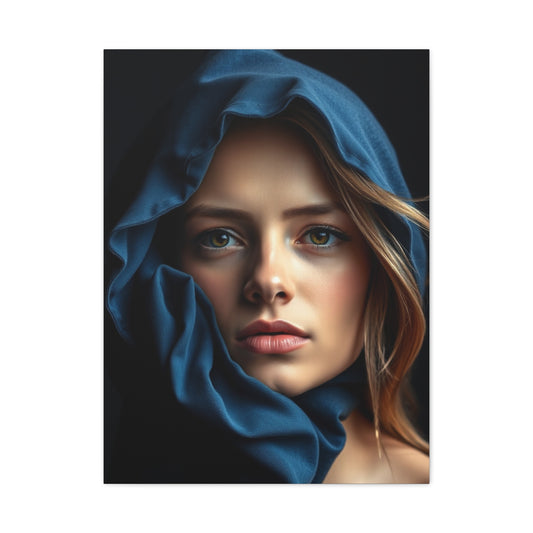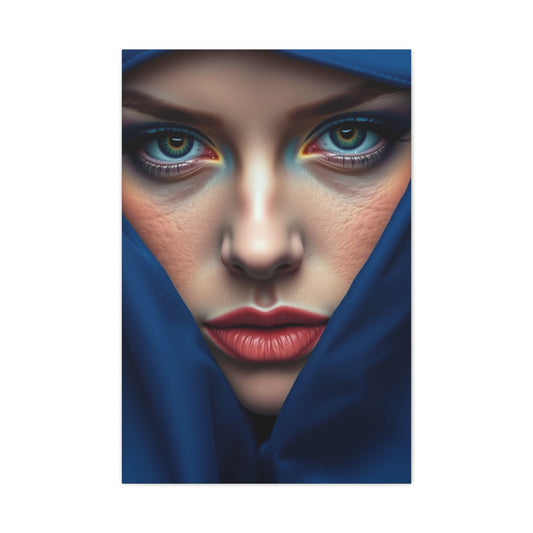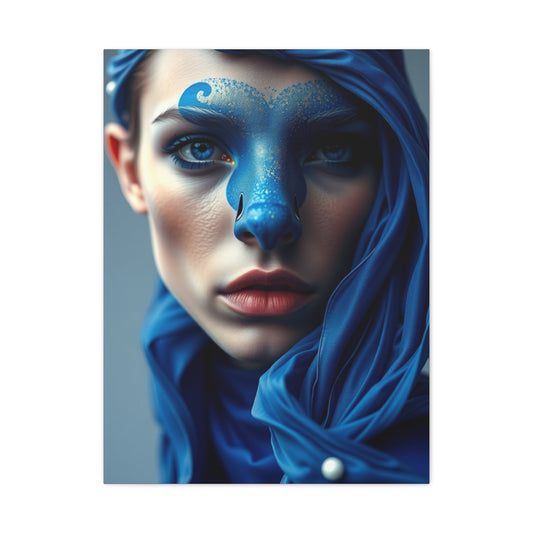The Timeless Elegance of Brown Walls
When it comes to home interiors, there are colours that instantly make the top of the list. White for its freshness, grey for its modern feel, blue for its calming nature, and beige for its subtle elegance. Brown, however, rarely gets chosen first. For many homeowners, brown feels heavy or outdated, and yet when you step into a space where brown has been used thoughtfully on the walls, the effect is striking. Brown has a timeless elegance that goes far beyond trends. It has a warmth and richness that few other colours can replicate. It is the colour of the earth beneath our feet, the wood in our furniture, and the leather that ages gracefully with time. In the world of interiors, brown is the colour of grounding and comfort. It balances, it soothes, and it creates a space that feels safe, reliable, and inviting. The appeal of brown walls lies not only in their beauty but in their psychology, their history, and their versatility. They bring depth and calmness, they echo nature, and they have a way of elevating both traditional and modern interiors.
Psychologists studying colour theory have long recognized brown as a shade that communicates stability and reliability. People often describe it as solid and dependable. When used on walls, brown acts like a quiet reassurance, reminding us of natural elements that support life itself. Unlike sharper, bolder colours that command attention, brown allows people to relax. It wraps a space in warmth and removes the feeling of starkness that can sometimes come with excessive use of white or grey. Brown does not try to dominate the room; instead, it works as a foundation. This makes it an excellent choice for spaces where people gather to talk, unwind, or simply feel at peace. A living room painted in a warm cocoa tone or a bedroom designed with sandy brown walls immediately communicates calmness. It is this very quality that keeps brown relevant in design even when other trendy colours fall out of fashion.
The historical presence of brown in interiors also adds to its timeless quality. In early architecture, natural pigments were mixed into plaster to create earthy wall tones. These were not only accessible but also practical, offering durability. Over centuries, brown appeared in various forms of design. In the grandeur of the Baroque era, it was paired with golds and deep reds to signify richness. In Victorian interiors, chocolate and mahogany tones were commonly used alongside heavy furniture and patterned rugs to emphasize depth and elegance. Later, during the Arts and Crafts movement, brown became central to the celebration of natural materials. The twentieth century saw brown taking on new roles. From mid-century modern spaces with teak furniture to 1970s homes rich with caramel and burnt sienna tones, brown constantly reinvented itself. Unlike trendy colours that appear and vanish, brown has been a continuous presence, adjusting itself to the styles of different generations. That adaptability is proof of its timelessness.
What sets brown apart is its direct connection with nature. In a world where people spend hours indoors, colours that evoke the outdoors have a powerful effect. Brown walls remind us of tree bark, soil, and stone. They tie us back to the grounding elements of the earth. This natural association is one reason brown walls are often found in eco-friendly homes that celebrate sustainable living. Brown pairs effortlessly with wood, bamboo, clay, or rattan. Together, these elements create a harmonious look that feels organic and wholesome. For people who enjoy biophilic design, where the goal is to connect indoor environments with the natural world, brown is indispensable. A wall painted in chestnut or taupe, combined with leafy green plants and wooden furniture, instantly builds that connection to the outdoors.
The versatility of brown is another reason it deserves more recognition. Unlike colours that are easily pigeonholed into one mood, brown spans a wide spectrum. There are light browns like tan and sand that brighten up a space and act as soft, neutral backdrops. There are mid-tone browns like caramel, mocha, and chestnut that add warmth without being overwhelming. Then there are dark browns like espresso and chocolate that bring drama and sophistication. Each variation carries its own personality. Light brown walls can make a room feel airy and open, while deep chocolate walls can create intimacy and luxury. Undertones also matter. A brown with red undertones feels rich and romantic, while one with grey undertones feels cooler and modern. Yellow-based browns bring warmth, and green-based browns feel earthy and organic. This palette is so diverse that there is truly a brown for every taste, whether the home is traditional, rustic, or minimalist.
Comparing brown to other neutrals shows its unique advantages. White may be clean and crisp, but it can sometimes feel sterile if not accessorized properly. Grey is sleek and modern but risks being cold in family spaces. Beige is subtle and adaptable, but without accents it can look flat. Brown manages to combine the best aspects of these neutrals while avoiding their pitfalls. It has the stability of grey, the softness of beige, and the timelessness of white, but it adds richness and character that none of the others achieve alone. A brown wall is never boring if styled correctly. It immediately communicates intention, as though the homeowner chose warmth and elegance rather than defaulting to something safe.
In minimalist design, brown has found a quiet but impactful role. Minimalist spaces thrive on simplicity and limited palettes, yet they run the risk of appearing cold. A wall painted in a light cocoa or sandy tone brings warmth into a minimalist room without disrupting its clean lines. Imagine a modern bedroom with low furniture, white bedding, and one taupe accent wall. The space remains uncluttered, but the brown introduces comfort and depth. In minimalist living rooms, brown combines beautifully with black steel frames, pale woods, and linen textiles. It adds an element of coziness without breaking the essential philosophy of less is more.
Rustic and traditional designs, on the other hand, often rely heavily on brown. Exposed beams, terracotta floors, and wooden paneling find their perfect backdrop in earthy brown walls. In country-style homes or mountain lodges, browns reinforce the connection to the landscape outside. Traditional libraries and studies, often filled with mahogany furniture and leather chairs, gain additional richness from dark brown walls. This combination communicates heritage, permanence, and authority. A dining room painted in espresso brown with golden accents, for example, can feel both stately and welcoming.
Modern and contemporary homes have embraced brown in lighter tones. A sandy beige-brown wall in a sleek apartment gives warmth to the otherwise cool finishes of glass, steel, and stone. Pairing brown with metallic accents like copper or brushed gold is particularly effective in contemporary design. Brown also plays an important role in open-plan spaces where zones need definition. Painting the dining space in caramel brown while keeping the living space in white helps create subtle separation without the need for partitions. Contemporary interiors thrive on this balance of warmth and contrast.
For those hesitant to commit fully, brown works beautifully as an accent wall. A single chocolate wall behind a bed, a sofa, or even in a hallway creates impact without overwhelming the room. Accent walls are a good way to experiment with richer shades, especially in smaller spaces. Accessories can then be chosen to complement the accent wall. Rugs, cushions, or artwork with hints of similar tones help pull the look together. Accent walls also allow homeowners to test how brown interacts with the light and furniture in their space before deciding to expand its use.
Pairing brown with other colours demonstrates just how flexible it is. Brown and white form a timeless contrast that feels fresh and clean. Brown and blue, representing earth and sky, are naturally calming together. Green and brown are reminiscent of forests and are ideal for those who want organic interiors. Yellow adds cheer to brown, while gold adds luxury. Brown and black together can feel bold and sophisticated, especially with metallic accents. Even unconventional pairings like purple or burgundy can bring depth when used sparingly against brown. This adaptability means that brown is not restrictive but rather opens a wide range of creative possibilities.
Lighting is crucial when working with brown walls. Natural daylight can enhance the warmth and reveal undertones that might not be obvious in artificial light. A dark chocolate brown can feel luxurious in a room with large windows, but the same shade may appear heavy in a dimly lit space. Warm artificial lighting adds coziness, making brown especially inviting in bedrooms and living rooms. Cooler lighting, on the other hand, makes brown appear more modern and crisp. Designers often recommend layering lighting, combining ceiling lights, sconces, and lamps to ensure brown walls are always shown at their best.
Texture and finish also influence how brown walls are perceived. A matte finish gives a soft, understated look, ideal for creating coziness. Satin or eggshell finishes provide a subtle sheen and are practical for spaces that require easy maintenance. Glossy finishes add drama and luxury, making them suitable for dining rooms or offices. Beyond paint, textured wall treatments in brown—such as plaster, wood panels, or faux finishes that mimic leather or stone—add richness and depth. These variations prevent brown from looking flat and instead give it dimension and character.
Practicality is another strong argument in favour of brown. It hides dirt and scuffs better than lighter neutrals, making it suitable for hallways, family rooms, or children’s areas. It also provides a forgiving backdrop for a wide range of furniture styles, which reduces the need for frequent redecorating. The key is to match the shade of brown to the size and lighting of the room. Very dark browns can make small rooms feel enclosed, while lighter browns help open them up. With careful selection, brown can suit almost any environment.
Culturally, brown carries different meanings. In many Western contexts, it symbolizes dependability and humility. In fashion, brown leather and fabrics have long conveyed practicality and timeless style. In some Eastern traditions, brown represents connection with the earth and grounded living. These associations add layers of meaning when the colour is used at home. Painting walls brown does not only shape how a space looks but also reflects values such as stability, warmth, and simplicity.
Ultimately, what makes brown walls timeless is their adaptability. They are as suitable in a rustic farmhouse as in a modern city apartment. They can feel luxurious or understated, bold or calming. They pair with countless colours, embrace a variety of finishes, and work in both grand and modest spaces. Unlike many colours that are tied to trends, brown has stayed relevant for centuries because it is rooted in nature and human experience. It is confident without being loud, elegant without being showy, and versatile without being bland. Brown walls will never shout for attention, but they will always hold it quietly, with grace and timeless appeal.
Brown in Bedrooms – Creating Comfort and Depth
Bedrooms are the most personal spaces within a home, places where we retreat after long days to relax, recharge, and find comfort. The colours chosen for bedroom walls play a powerful role in shaping mood and atmosphere. While light shades like white or cream have long dominated bedroom design, brown offers a unique and underrated alternative. Brown bedrooms are calming, grounding, and versatile, making them suitable for a wide range of styles. From rustic retreats to modern sanctuaries, the colour brown adapts beautifully. It embodies warmth and depth, creating spaces that feel safe and restful. By exploring how brown interacts with light, textures, furniture, and other colours, homeowners can transform their bedrooms into havens of comfort and elegance.
The first reason brown works so well in bedrooms is its psychological effect. Unlike bolder hues that may energize or distract, brown is naturally calming. It reminds us of earth, wood, and natural materials. When walls are painted in shades of brown, the room feels stable, grounded, and restful. These are exactly the qualities one seeks in a bedroom. People want to walk into the room and feel their stress levels drop instantly, and brown has the ability to create this effect. In contrast, a stark white bedroom may feel sterile or cold at night, while bright colours may be too stimulating. Brown avoids both extremes, offering instead a balanced environment conducive to relaxation. Bedrooms painted in light browns like sand or taupe often feel soft and welcoming, while darker browns like espresso or chocolate evoke coziness and intimacy.
Brown also excels at versatility in design. A bedroom with brown walls can lean toward luxury, rustic simplicity, or sleek modernity depending on how the colour is applied. For example, a chocolate brown wall behind the bed paired with gold accents and plush textiles creates a hotel-inspired luxurious bedroom. On the other hand, pairing sandy brown walls with natural wood furniture and woven fabrics results in a rustic, earthy retreat. Mid-tone browns combined with minimalist furniture and black pendant lights give off a contemporary, urban vibe. This flexibility is why brown is such a strong candidate for bedrooms. Homeowners can adapt it to personal preferences without being locked into a single aesthetic. With the right choices, brown can be romantic, modern, rustic, or minimal.
Lighting plays an especially important role in how brown bedrooms are perceived. Natural daylight highlights undertones and makes lighter browns appear bright and cheerful. At dusk, however, the same shades create a more mellow mood. Darker browns rely heavily on lighting to avoid feeling heavy. Warm artificial lighting works beautifully with brown, enhancing its cozy qualities and making the bedroom inviting. A bedside lamp casting warm light against a chocolate brown wall can feel incredibly comforting. Dimmer switches are also particularly effective in brown bedrooms because they allow the mood to shift from vibrant daylight brightness to soothing evening calm. Brown walls reflect and interact with light in ways that can enhance the sense of depth and texture, ensuring that the room always feels dynamic.
Furniture and textiles play a vital role in complementing brown walls. Wooden furniture is a natural partner for brown because both share an earthy foundation. Lighter wood tones like oak and pine brighten a room with darker brown walls, while deeper woods like walnut or mahogany harmonize with lighter brown walls to create contrast. Upholstered headboards in fabrics such as beige, cream, or tan look elegant against mid-tone brown walls. Bed linens, curtains, and rugs also shape the mood. Crisp white bedding contrasts beautifully with chocolate walls, giving the space a clean yet dramatic feel. Cream or beige textiles emphasize softness and warmth, while darker tones such as navy or deep green create striking combinations that feel bold yet restful. Throw blankets and cushions in metallic shades like gold or copper can add a touch of glamour to a brown bedroom without overwhelming it.
Brown bedrooms also benefit from layering textures. A flat painted wall is just one element; incorporating wood paneling, fabric headboards, rugs, and curtains enhances the overall effect. Imagine a bedroom with taupe walls, a leather headboard, linen curtains, and a wool rug. Each layer adds dimension, preventing the brown from feeling monotonous. Textures give depth, and when combined with brown, they create a sensory richness that is deeply satisfying. Even a minimalist brown bedroom benefits from a few well-chosen textures, such as a smooth wall finish paired with raw wood furniture and a knitted throw. The layering of tactile elements makes the room feel warm and engaging.
The combination of brown with other colours in bedrooms opens further creative possibilities. Brown and blue together evoke the harmony of earth and sky, creating a calming and balanced environment. A bedroom with navy blue bedding against a backdrop of light brown walls feels both modern and serene. Brown and green represent forests and fields, perfect for those who want a nature-inspired sanctuary. Lighter shades of green, like sage, bring freshness to brown, while darker greens create a more dramatic and sophisticated look. White paired with brown is a classic combination. White ceilings and bedding brighten the space, while brown walls add grounding depth. Yellow accents add vibrancy and cheer, while metallic tones like gold bring elegance. Even bolder choices like purple or burgundy can be paired with brown to create romantic and luxurious bedrooms. The key lies in balance, ensuring that the supporting colours enhance rather than compete with the brown.
One interesting approach is to use multiple shades of brown in a single bedroom. Instead of relying on just one tone, layering different browns creates a sophisticated monochromatic effect. For example, walls painted in a mid-tone caramel brown can be paired with a darker espresso headboard and lighter tan linens. Adding touches of cream or beige prevents the palette from feeling too heavy while maintaining harmony. This technique works particularly well in modern bedrooms that want to embrace depth without excessive colour contrasts. The result is a layered, seamless look that feels cohesive and elegant.
Practicality also makes brown a smart choice for bedrooms. Brown hides scuffs and marks better than lighter colours, which is useful in households with children or pets. Unlike bright colours that can fade quickly, brown tends to age gracefully. A chocolate wall remains elegant over time, and a sandy wall maintains its neutrality even as furniture and accessories change. Brown also adapts well to different décor updates. If someone decides to change bedding or curtains from light to dark tones, brown walls can still provide a suitable backdrop. This adaptability ensures that a bedroom painted brown can evolve with changing tastes without requiring repainting every few years.
The cultural associations of brown add another layer of meaning to its use in bedrooms. Brown has long symbolized dependability, humility, and connection with nature. In many cultures, it is associated with simplicity and grounded living. A bedroom painted in brown therefore communicates not only aesthetic choices but also values. It shows an appreciation for natural beauty, stability, and comfort. Unlike flashy colours that may be chosen to impress, brown reflects a desire for authenticity and warmth. This makes it particularly meaningful in a space as intimate as a bedroom, where personal values and comfort are more important than show.
For couples, brown bedrooms can also create intimacy. Darker shades in particular foster a cozy, enclosed feeling that encourages closeness. When combined with soft lighting and luxurious textiles, brown walls can make a bedroom feel romantic without resorting to stereotypical colour choices like red or pink. For individuals, brown bedrooms provide a sanctuary that feels safe and private, an environment where the outside world fades away. This psychological comfort is one of the strongest arguments for choosing brown as a dominant colour in bedrooms.
Designers often emphasize the importance of balance when using brown in bedrooms. Too much dark brown in a small, poorly lit room can feel heavy, while too much light brown without contrast may appear bland. The solution is to mix shades, textures, and supporting colours thoughtfully. For example, a small bedroom can still feature a chocolate accent wall if the other walls are kept light and the room is filled with soft, reflective textiles. A large bedroom with high ceilings, on the other hand, can comfortably embrace darker tones without feeling enclosed. Lighting, furniture placement, and accessories all contribute to achieving the right balance.
What makes brown particularly timeless in bedrooms is its ability to adapt to changing trends. While pastel walls may feel outdated after a decade, brown rarely goes out of style. Its connection to nature and its ability to ground a space ensures that it remains relevant across generations. Whether the style is rustic farmhouse, minimalist modern, or urban chic, brown finds its place. It provides a backdrop that feels intentional, elegant, and warm. In bedrooms, where comfort and relaxation matter most, this timeless quality makes brown a reliable choice that homeowners rarely regret.
In conclusion, brown in bedrooms is far more than just a wall colour. It is a mood-setter, a harmonizer, and a timeless design tool. It brings comfort, depth, and warmth to spaces where people need to feel at ease. It interacts beautifully with light, furniture, and textiles. It adapts to various styles, from luxurious to rustic, and pairs well with a wide range of supporting colours. It offers practical advantages and carries cultural meanings that enhance its value. Most importantly, brown creates bedrooms that feel deeply personal and restful. Choosing brown is choosing comfort, depth, and elegance that will remain timeless no matter how trends change.
Brown in Living Rooms and Social Spaces
The living room is often described as the heart of the home, the place where families gather, guests are entertained, and daily life unfolds in its most visible form. Because it plays such a central role, the colour chosen for living room walls becomes especially important. It sets the tone for the atmosphere, influences the sense of space, and provides the backdrop against which furniture, art, and memories are layered. Brown, while not always the first colour people think of, can be one of the most powerful choices for this social hub. It brings warmth, depth, and a sense of groundedness that make living rooms feel welcoming yet sophisticated. Its versatility allows it to adapt seamlessly to various design styles, whether traditional, rustic, industrial, or modern. In addition, brown interacts beautifully with both natural light during the day and artificial lighting in the evening, ensuring that living spaces remain inviting no matter the time. By understanding how brown functions in living rooms and other communal spaces such as dining areas or lounges, homeowners can unlock the full potential of this timeless colour.
At the most basic level, brown appeals in living rooms because it mirrors the colours of natural materials we instinctively associate with comfort. The sight of rich soil, aged leather, or polished wood brings familiarity and calm. When translated to walls, brown conveys that same sense of reliability. A room painted in shades of chocolate, taupe, or caramel instantly feels grounded and approachable. It is not cold or distant, nor is it loud or distracting. This makes it an ideal colour for social spaces, where people want to connect and feel at ease. Brown encourages conversation by offering a backdrop that does not compete for attention but instead supports the overall harmony of the room. Guests walking into a brown-toned living space often describe it as cozy, stable, and stylish without it being overly formal.
The adaptability of brown means that it can be styled in countless ways to suit different tastes. In a traditional living room, deep brown walls can be paired with heavy curtains, patterned rugs, and dark wooden furniture to create an atmosphere of elegance and grandeur. This recalls historic studies or parlors where brown signaled heritage and stability. In rustic spaces, brown is equally at home. Walls in earthy mid-tones blend naturally with exposed beams, stone fireplaces, and handwoven textiles. The result is a room that feels connected to nature and tradition. Industrial interiors also benefit from brown. A brick wall in its natural brownish-red hue, paired with unfinished wood and metal shelving, creates a strong yet inviting character. Even minimalist or contemporary living rooms can embrace brown successfully by using lighter tones such as sand or mocha as a backdrop for sleek furniture and clean lines. This flexibility ensures that brown is never limited to one particular aesthetic.
One of the most striking applications of brown in living rooms is its use as an accent wall. Many homeowners may hesitate to cover every wall in a dark shade for fear of shrinking the space. However, a single brown feature wall can add dramatic depth without overwhelming the room. For example, painting the wall behind a sofa in a rich chocolate shade immediately anchors the space and creates a focal point. When combined with lighter walls on the remaining sides, the effect is both bold and balanced. An accent wall in brown can also highlight architectural features such as a fireplace or alcove, making them stand out as key elements of the room’s design. Accessorizing around the accent wall with complementary colours in cushions, throws, and artwork ties the entire space together, turning the living room into a cohesive and inviting environment.
Brown’s ability to harmonize with other colours is another reason it thrives in living rooms and social spaces. Pairing brown with white creates a crisp, timeless contrast that feels both fresh and classic. This combination works especially well when the ceiling and trim are kept white, while the walls take on brown tones. The result is a space that feels open and bright yet grounded. Brown also pairs beautifully with blue, a colour often chosen for living rooms because of its calming effect. Together, blue and brown represent sky and earth, a pairing that feels natural and balanced. Green is another excellent partner for brown. Whether in the form of actual plants or accent textiles, green brings freshness and life to brown interiors, reinforcing their natural appeal. Metallics such as gold, copper, or brass add luxury and sophistication to brown living rooms. A caramel wall paired with a brushed gold lamp or a chocolate accent wall complemented by copper accessories demonstrates how brown can move effortlessly from rustic comfort to refined elegance. Even bold pairings such as brown with mustard yellow, burgundy, or black can create dynamic and stylish spaces when applied thoughtfully.
Furniture and flooring choices also play an essential role in maximizing the effect of brown walls. Leather sofas in shades of tan or deep brown naturally blend into the environment, creating continuity and reinforcing the room’s warmth. Wooden coffee tables, shelves, and flooring further extend the earthy palette. In fact, one of the unique strengths of brown walls is how easily they integrate with wooden finishes. Light woods like oak or birch brighten a darker brown room, while darker woods like walnut or mahogany create a sense of richness when paired with lighter walls. Area rugs add another dimension, whether through neutral tones that soften the look or bold patterns that provide contrast. Textiles such as curtains, throws, and cushions help balance the heaviness of brown with lighter or brighter accents. This interplay between walls, furniture, and fabrics is what ultimately defines the comfort and character of a living room.
Lighting is perhaps the most important factor in how brown living rooms are experienced. During daylight hours, brown walls take on different personalities depending on the amount of natural light available. In a room with large windows, deep chocolate walls appear rich and luxurious without feeling heavy. In darker rooms, lighter browns such as taupe or sandy shades help reflect the available light and prevent the space from feeling closed in. In the evening, artificial lighting enhances brown’s natural warmth. Warm bulbs cast a glow that deepens the richness of brown, creating an inviting atmosphere perfect for social gatherings. Layered lighting strategies work especially well in brown living rooms. Overhead lighting provides general illumination, while table lamps, floor lamps, and wall sconces add ambiance and highlight specific areas. Accent lighting can be used to draw attention to artwork, shelves, or architectural features, ensuring that brown walls are never flat but always dynamic.
Textures are another way to elevate brown living rooms. A matte brown wall provides a soft, understated backdrop, while satin or eggshell finishes add a slight sheen that reflects light subtly. For those who want to go further, textured finishes such as stucco, plaster, or wallpaper can add depth and character. Faux finishes that mimic stone, leather, or wood grain in brown tones introduce an additional layer of sophistication. Pairing these textures with soft fabrics like velvet cushions or wool rugs creates an interplay that feels both rich and comfortable. Industrial-inspired living rooms might incorporate exposed brick in its natural brown tones, while rustic spaces can use reclaimed wood paneling. These variations in texture prevent brown from feeling monotonous and instead turn it into a canvas for creativity.
Brown’s practicality is another compelling reason to use it in living rooms and social spaces. Unlike very light colours, brown is more forgiving when it comes to daily wear and tear. Scuffs, fingerprints, or minor marks are less noticeable, which is especially beneficial in busy households. This durability ensures that living rooms maintain their appearance for longer, even with frequent use. Furthermore, brown provides a neutral yet character-rich backdrop that adapts to changing décor. Whether homeowners decide to update furniture, switch rugs, or introduce new accent colours, brown walls remain a flexible foundation. This adaptability is crucial in social spaces, where trends may shift, but the need for comfort and functionality remains constant.
Culturally, brown carries associations that enhance its use in living rooms. It is often seen as dependable, approachable, and honest. In fashion, brown leather has long represented durability and timeless style. In interiors, these qualities translate into a sense of authenticity and groundedness. A living room painted brown therefore communicates not only aesthetic preferences but also values. It signals a desire for stability, warmth, and connection, qualities that align perfectly with the role of the living room as a gathering space. In many ways, brown allows homeowners to subtly express their personality through colour without resorting to flashiness or excess.
For open-plan homes, brown plays a particularly useful role in defining spaces. An open-plan layout often combines living, dining, and kitchen areas into one large space. Using brown strategically on walls can help visually separate these areas without the need for physical partitions. For example, painting the dining area in a mid-tone caramel brown while keeping the living room walls a lighter taupe creates distinction while maintaining harmony. This zoning effect makes the home feel organized and intentional. In larger social spaces such as family rooms or entertainment areas, brown adds intimacy, ensuring that even expansive rooms feel inviting and comfortable.
The enduring appeal of brown in living rooms lies in its ability to balance elegance and comfort. It is a colour that feels luxurious without being pretentious, cozy without being casual. Unlike trendy shades that may feel dated after a few years, brown remains timeless because it is rooted in nature and human experience. Its flexibility across styles, its compatibility with a wide range of colours, and its ability to adapt to different lighting and textures make it a reliable choice for social spaces. For homeowners seeking to create living rooms that are welcoming, stylish, and enduring, brown offers everything needed to achieve that goal.
In conclusion, brown in living rooms and social spaces is more than just a paint choice. It is a design philosophy that emphasizes warmth, depth, and timelessness. It works across a spectrum of styles, from rustic to contemporary, and integrates seamlessly with natural materials, textiles, and furniture. It adapts to both daylight and artificial lighting, making spaces feel dynamic and inviting at all times. It offers practical advantages in durability and versatility. Most importantly, it communicates values of stability, comfort, and authenticity. By choosing brown for living rooms, homeowners create environments that not only look elegant but also feel deeply welcoming, ensuring that every gathering, conversation, and quiet moment takes place in a setting of timeless elegance.
Styling With Brown – Accessories, Accents, and Advanced Combinations
When people think of wall paint, they often stop at the basics: what colour to choose, whether to go light or dark, and how it will look across the largest surfaces of a room. But design is rarely about just the walls. What truly brings a space to life is the way a colour interacts with everything else in the environment. Brown, in particular, is a colour that thrives on styling. Its ability to blend, contrast, and elevate depends heavily on how it is paired with accessories, accents, and other design elements. While parts of the home like bedrooms or living rooms can be transformed simply by painting walls brown, the real magic lies in how those walls are dressed and supported. Brown works beautifully with textures, patterns, materials, and accent colours. It adapts to different design philosophies and personal preferences, making it one of the most versatile colours in interior design. In this part, the focus is on how to style with brown beyond the paintbrush, showing how to take interiors to another level by using it as the backbone for creativity.
The first thing to consider when styling with brown is how to layer it with accessories. A brown wall on its own is grounding, but when paired with the right elements, it can become dynamic and expressive. Take textiles, for example. A chocolate-brown wall behind a sofa instantly becomes warmer and more inviting when cushions in cream, mustard, or deep green are added. Curtains in lighter shades create contrast and prevent the wall from feeling too heavy. Rugs can either echo the brown tones or introduce patterns that play against them. A patterned rug with hints of brown, blue, and gold can tie the space together, making the wall feel intentional rather than isolated. Throws, bedspreads, and even table runners can incorporate shades that harmonize with brown while also adding personality. These small touches soften the solidity of brown walls, allowing them to feel part of a broader narrative.
Furniture is another crucial element. Wooden furniture is the most natural companion to brown walls. However, the trick lies in balancing tones. A dark espresso wall can feel too heavy if paired with equally dark furniture, but placing lighter oak or birch pieces against it creates contrast that feels sophisticated. On the other hand, sandy or taupe walls benefit from deeper woods like walnut, which bring richness to the palette. Upholstered furniture offers more flexibility. A beige or cream sofa stands out beautifully against a chestnut wall, while a leather armchair in caramel adds character to a taupe room. For a more contemporary look, pairing brown walls with sleek black or metal furniture creates contrast and modernity. Even glass-topped tables with metallic bases gain warmth when set against brown, proving how adaptable the colour is to different furniture styles.
Lighting is equally important in styling with brown. The way light interacts with brown can either enhance or diminish its appeal. Warm lighting complements brown, making it feel cozy and inviting. A floor lamp with a golden glow softens the richness of a chocolate wall and creates an intimate corner for reading. Pendant lights with copper or brass finishes add sophistication to brown interiors, while black fixtures sharpen their modern edge. Even natural lighting can be styled to suit brown walls through the choice of window treatments. Sheer curtains in cream allow daylight to filter softly, highlighting undertones in the paint, while heavier drapes in complementary colours like green or deep red add drama. Lighting accessories, from chandeliers to bedside lamps, can become tools that amplify the mood created by brown walls, shifting a room from practical during the day to luxurious or romantic at night.
One of the most exciting ways to style with brown is through advanced colour combinations. Brown is neutral enough to serve as a base, but it is rich enough to hold its own against bold accents. For instance, pairing brown with yellow creates a lively contrast. A caramel wall with mustard cushions or artwork can instantly brighten the mood of a room. Blue and brown together create a natural harmony, as though earth and sky are meeting indoors. This pairing works particularly well in bedrooms or offices where calm focus is needed. Green is another natural partner. Olive or sage accents complement brown walls beautifully, reinforcing an organic, biophilic aesthetic. For a touch of luxury, metallics are unbeatable. Gold and copper add warmth, while silver and chrome bring a cool, modern edge. Even unexpected colours like purple or burgundy can create sophisticated pairings with brown. A chocolate wall with plum velvet cushions feels rich and romantic, while a taupe wall with burgundy curtains introduces elegance. Styling with these accent colours prevents brown from feeling static and instead turns it into a canvas for experimentation.
Pattern also plays a key role in styling with brown. Because brown is a grounding colour, it provides the perfect backdrop for patterned textiles, wallpapers, or artworks. A geometric rug in black and white becomes striking against a cocoa wall. Floral curtains with hints of brown tie seamlessly into a taupe room. Abstract art in bold colours like teal, orange, or gold stands out dramatically on chocolate walls, turning them into gallery-like backdrops. Wallpaper can also be used strategically. A feature wall with a brown and gold damask pattern adds luxury to a dining room, while a brown brick-effect wallpaper in a loft-style apartment reinforces an industrial aesthetic. Patterns, when thoughtfully chosen, elevate brown walls by breaking up the monotony and injecting energy into the space.
Plants and natural elements are another way to style with brown. The combination of brown walls and greenery is timeless. Plants add vibrancy and life, while brown provides the grounding contrast that makes green pop. Large potted plants like fiddle-leaf figs or monsteras look dramatic against dark brown walls. Smaller plants in terracotta pots blend beautifully with sandy or tan shades. Even dried arrangements or natural branches complement brown interiors by reinforcing the earthy connection. Incorporating stone, clay, or woven baskets further emphasizes this natural theme, creating interiors that feel authentic and nurturing.
Art and décor items complete the styling process. Brown walls make an excellent backdrop for both neutral and colourful artwork. Black-and-white photography framed in black looks striking on taupe walls. Large abstract paintings with bursts of colour add vibrancy to chocolate backgrounds. Mirrors are another effective tool. A large mirror framed in wood or metal not only complements brown but also reflects light, preventing the room from feeling enclosed. Décor pieces like ceramics, vases, or sculptures can introduce subtle accents of colour and texture. Even everyday objects like books, candles, or trays become part of the styling narrative when chosen thoughtfully. The goal is to ensure that every element contributes to a cohesive whole, where brown walls are not just painted surfaces but integral parts of the room’s story.
Brown can also be layered on brown, a styling technique that creates depth through subtle variations. For example, a taupe wall paired with a darker espresso headboard and lighter tan cushions creates a monochromatic palette that feels seamless yet sophisticated. Adding metallic accents or white touches prevents the palette from becoming too heavy. This layering technique works particularly well in modern or minimalist settings where the goal is harmony rather than contrast. By playing with different shades, designers can highlight the versatility of brown while maintaining a cohesive look.
Styling with brown also extends to seasonal changes. Because it is a neutral base, brown walls can adapt to seasonal décor easily. In winter, pairing chocolate walls with deep reds, plaids, and warm lighting creates a festive, cozy environment. In summer, switching to lighter textiles in cream, blue, or yellow brings freshness without repainting. Autumn styling can highlight browns with orange, rust, and gold accents, echoing the colours of falling leaves. Spring allows pastel accents like sage green, blush, or light blue to refresh brown interiors. This adaptability means that brown walls do not restrict design choices but instead provide a stable foundation for year-round creativity.
From a practical standpoint, brown’s styling strength lies in its durability and flexibility. It accommodates change, whether through new accessories, different lighting, or updated furniture. Unlike trend-driven colours that require frequent reinvention, brown remains constant and reliable. Styling simply becomes a matter of refreshing the surrounding elements, not redoing the walls. This makes it a cost-effective and sustainable choice for long-term design.
Ultimately, styling with brown through accessories, accents, and advanced combinations reveals the true power of the colour. It is not limited to being a neutral backdrop but can be the star of the design when used with intention. Brown adapts to bold contrasts, embraces natural elements, and thrives on texture and pattern. It complements furniture, responds beautifully to lighting, and provides a canvas for art and décor. Its ability to shift with seasons and trends ensures that it always remains relevant. More than just a wall colour, brown is a versatile design tool that, when styled thoughtfully, transforms homes into elegant, warm, and timeless spaces. By embracing the richness of brown and layering it with creativity, homeowners can achieve interiors that feel both deeply personal and universally inviting.
Conclusion
Brown wall paint colours bring together elegance, warmth, and timeless appeal in ways that few other shades can achieve. Across bedrooms, living rooms, and social spaces, brown adapts effortlessly, offering stability, comfort, and versatility. It serves as a grounding backdrop that enhances natural materials, responds beautifully to lighting, and welcomes a wide range of accessories and accents. From soft sandy tones that create airiness to deep chocolate shades that add luxury and depth, brown offers a spectrum that suits every mood and style. Its compatibility with colours like white, blue, green, and gold further expands creative possibilities, ensuring that no two brown interiors need ever feel the same. More than just a wall colour, brown is a design tool that evolves with trends while remaining rooted in nature and tradition. Choosing brown means choosing a palette that feels authentic, durable, and endlessly adaptable. For anyone seeking interiors that are cozy yet sophisticated, modern yet timeless, brown is not simply an option but a lasting solution for creating a home that truly feels like home.




























